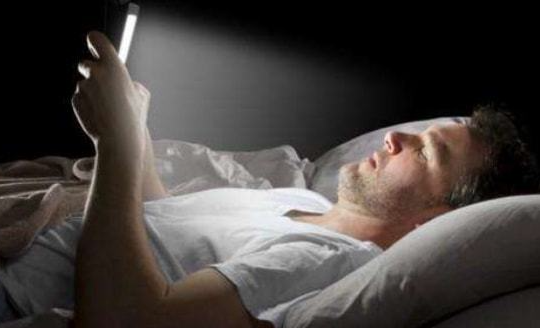
This Bedroom Object Is Ruining Your Sleep Quality… See More
You’ve tried everything to improve your sleep—cutting back on caffeine, establishing a regular bedtime, even investing in expensive blackout curtains. Yet you still wake up feeling tired, groggy, and far from rested. The culprit might not be your habits or your mattress, but something much smaller that you’ve overlooked: your smartphone.
That innocent-looking device on your nightstand—or worse, in your bed—is sabotaging your sleep in ways you probably haven’t considered. It’s not just the obvious blue light or the temptation to scroll through social media one last time. The damage begins long before you even pick up your phone and continues throughout the night in ways that might surprise you.
The blue light emitted by smartphone screens is particularly problematic for sleep. This specific wavelength of light suppresses melatonin production more effectively than any other type of light. When you check your phone in the evening, you’re essentially telling your brain that it’s still daytime, disrupting your natural circadian rhythm. For older adults, whose melatonin production already naturally decreases with age, this additional suppression can be especially damaging to sleep quality.
But the light is just the beginning. The content you consume on your phone activates your brain when it should be winding down. Reading stressful news alerts, responding to work emails, or even engaging in intense social media debates triggers the release of cortisol and adrenaline—hormones that promote alertness and make it difficult to fall asleep. Your brain needs time to transition from alertness to sleep readiness, and phone use prevents this natural wind-down process.
The constant connectivity means you’re never truly “off.” Even if you’re not actively using your phone, notifications can disrupt your sleep throughout the night. Each buzz, beep, or flash of light can cause micro-arousals—brief awakenings that fragment your sleep architecture without you even consciously waking up. You might not remember these interruptions in the morning, but your body does, and it pays the price in reduced sleep quality.
The physical presence of the phone in your bedroom creates psychological pressure to remain available. Subconsciously, you’re maintaining a level of alertness because part of your brain is waiting for that next notification. This prevents you from fully relaxing into deep, restorative sleep stages. For older adults who may already experience more fragmented sleep patterns, this additional disruption can significantly impact daytime energy and cognitive function.
Charging your phone near your bed exposes you to electromagnetic fields (EMFs) throughout the night. While the research on EMFs and sleep is still evolving, some studies suggest that exposure during sleep may affect sleep architecture and reduce sleep quality. The wireless radiation from your phone—even when you’re not using it—may interfere with your body’s natural sleep processes.
The solution isn’t necessarily to completely eliminate technology from your life, but to create healthier boundaries. Establish a digital curfew at least one hour before bedtime. Charge your phone in another room overnight. If you use your phone as an alarm clock, invest in a traditional alarm clock instead. The physical separation will help your brain associate your bedroom with sleep rather than stimulation.
For those who resist because they want their phone available for emergencies, consider a compromise. Keep the phone in your bedroom but place it across the room, silenced and face down. This maintains accessibility while reducing the temptation to use it and minimizing sleep disruptions from notifications.
Your bedroom should be a sanctuary for sleep, not an extension of your office or social life. By removing this one object from your immediate sleep environment, you might discover improvements in sleep quality that eluded you through other methods. The best sleep upgrade you can make tonight might be as simple as leaving your phone in another room.